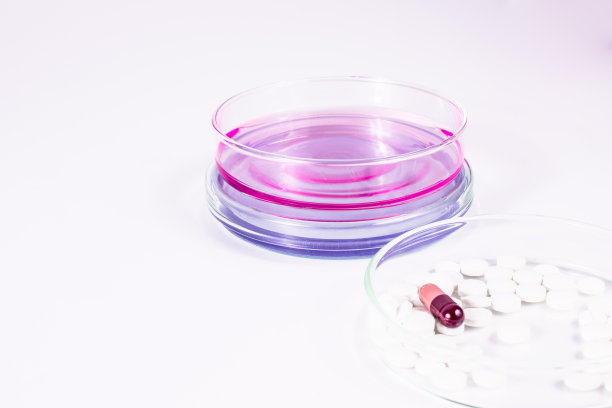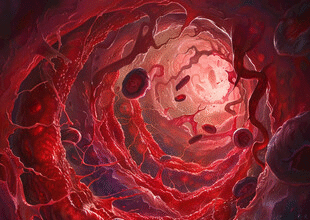Inflammation: Causes, Mediators, Types, and Care
Inflammation is the body’s protective response to injury, irritation, or infection. Blood vessels and immune cells work together to contain harm, clear damaged tissue, and start repair. Most inflammation is helpful and short‑lived; when excessive or prolonged, it can damage tissues and needs medical care.
- Key takeaways
- What causes inflammation?
- How inflammation works (the basics)
- Types and patterns you might hear about
- Normal symptoms vs. systemic effects
- Safe self‑care for minor inflammation
- When to seek medical care urgently
- How clinicians evaluate and treat inflammatory conditions
- Lowering chronic inflammation risk
Key takeaways
- The classic local signs are redness, heat, swelling, pain, and reduced function.
- Triggers include infection, physical or chemical injury, impaired blood flow, and abnormal immune reactions.
- Chemical mediators (e.g., histamine, prostaglandins, cytokines) drive vascular changes and immune cell recruitment.
- Acute inflammation usually resolves; chronic inflammation can lead to scarring (fibrosis) or granulomas.
What causes inflammation?
- Infectious agents: bacteria, viruses, fungi, parasites, mycoplasma, rickettsiae, spirochetes
- Physical injury: heat/cold, radiation, electricity, mechanical trauma
- Chemical injury: strong acids/bases, toxins, irritants; endogenous crystals/metabolites (e.g., uric acid in gout)
- Ischemia and tissue necrosis: poor blood flow or infarction
- Immune reactions: allergies/hypersensitivity; autoimmune diseases (e.g., rheumatoid arthritis)
How inflammation works (the basics)
- Sensing damage: injured cells and sentry immune cells release signals.
- Vascular response: vessels dilate (causing redness/heat) and become leaky so fluid and proteins exude (swelling).
- Leukocyte recruitment: white blood cells adhere and migrate into tissue to ingest microbes/debris.
- Clean‑up and repair: debris is removed; cells proliferate and tissues repair. Outcomes include full resolution, scarring, abscess formation, or progression to chronic inflammation.
Key mediators (plain‑English version)
- Histamine: early vasodilation and leakiness (from mast cells)
- Prostaglandins/leukotrienes: pain, fever, vascular and bronchial effects
- Cytokines (e.g., IL‑1, TNF, IL‑6): coordinate inflammation; drive fever and liver acute‑phase response
- Bradykinin: pain and vascular leak
- Complement: tags microbes and helps clear them
- Nitric oxide: vasodilation and microbe defense
Types and patterns you might hear about
- Acute inflammation (hours–days): rapid onset; neutrophil‑predominant
- Chronic inflammation (weeks–months): ongoing immune activity with tissue injury, scarring, or granulomas
- Common patterns: serous (watery), fibrinous, purulent/suppurative (pus/abscess), cellulitis (diffuse spread), granulomatous (e.g., TB, sarcoidosis)
Normal symptoms vs. systemic effects
- Local: redness, warmth, swelling, tenderness, stiffness/limited function
- Systemic: fatigue, loss of appetite, mild fever, elevated white blood cell count or inflammatory markers
Safe self‑care for minor inflammation
- Protect and rest the area; avoid activities that worsen pain.
- Cold packs in the first 24–48 hours after acute injury (10–20 minutes on, with cloth barrier); later, gentle heat can ease stiffness.
- Compression and elevation for limb swelling.
- Over‑the‑counter pain relief: acetaminophen for pain/fever; NSAIDs (ibuprofen/naproxen) for pain and swelling if no contraindications (kidney disease, ulcers/bleeding risk, certain heart conditions, pregnancy). Follow label dosing and avoid duplicate ingredients.
- Wound care: rinse minor wounds with clean water and mild soap; keep clean and covered if needed. Avoid harsh chemical antiseptics on healthy tissue.
When to seek medical care urgently
- Spreading redness, rapidly worsening pain, high fever or chills
- Pus with foul odor, red streaks up a limb, or severe tenderness
- Hot, swollen joint—especially with fever (possible septic arthritis)
- Shortness of breath, chest pain, confusion, severe headache/stiff neck
- Persistent symptoms that don’t improve after a few days of appropriate self‑care
- You are very young/older, pregnant, or immunocompromised
How clinicians evaluate and treat inflammatory conditions
- Evaluation: history, exam, blood tests (e.g., CRP/ESR, CBC), cultures if infection suspected, and imaging (ultrasound, X‑ray, CT/MRI) when needed.
- Treatment depends on cause:
- Infection: appropriate antibiotics/antivirals/antifungals; drainage of abscesses when indicated
- Autoimmune/allergic disease: anti‑inflammatories, corticosteroids, or disease‑modifying therapies (DMARDs/biologics)
- Pain and function: physical therapy, bracing, rehabilitation
- Antibiotic stewardship: antibiotics don’t treat viral illnesses and should be used only when indicated.
Lowering chronic inflammation risk
- Don’t smoke; avoid secondhand smoke and vaping
- Maintain a healthy weight; prefer a plant‑forward, Mediterranean‑style diet
- Stay physically active; prioritize sleep and stress management
- Keep vaccinations current; manage blood pressure, cholesterol, and blood sugar
This guide is for general education and does not replace professional medical advice. For persistent or severe symptoms, seek care and follow local medical guidance.







